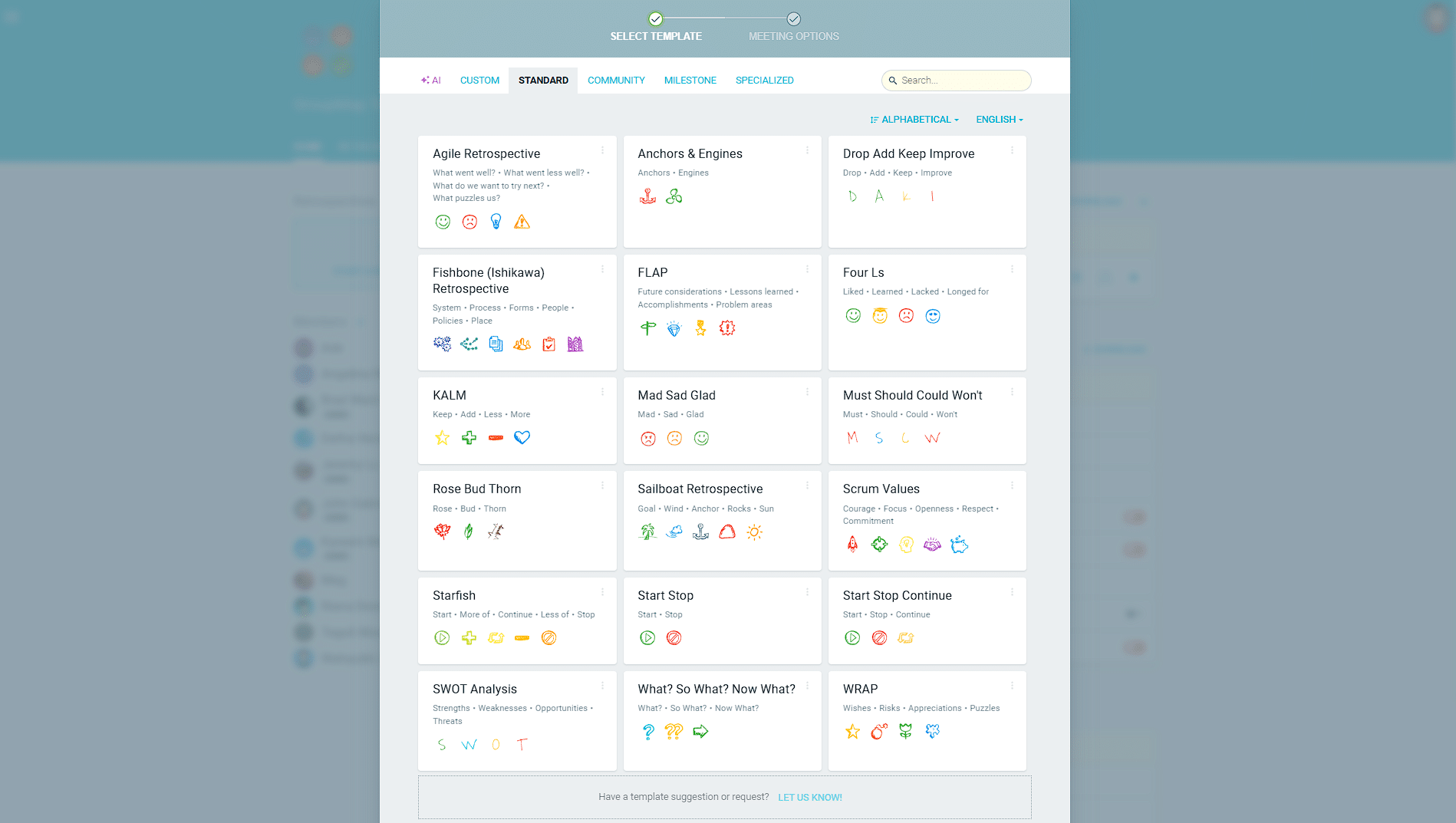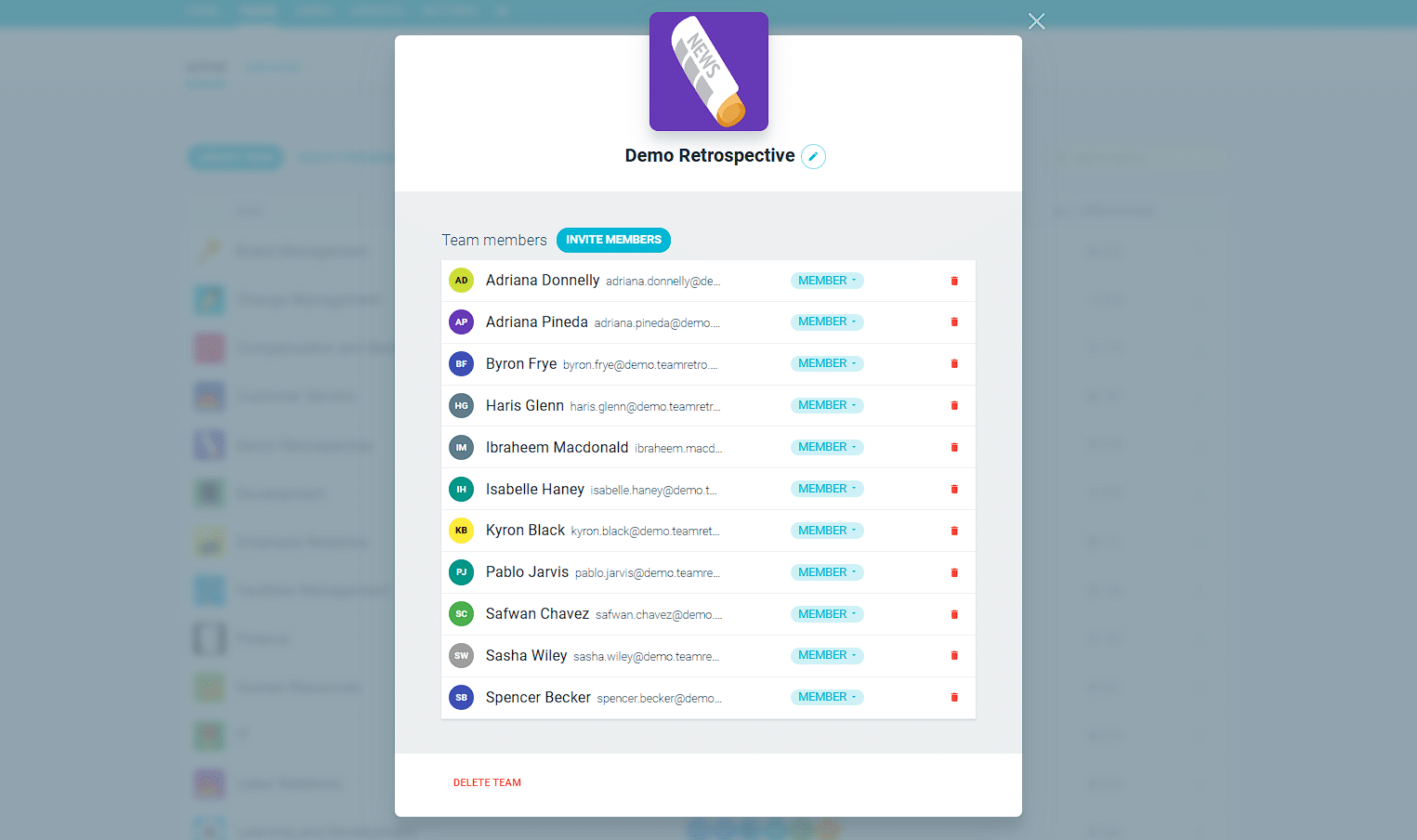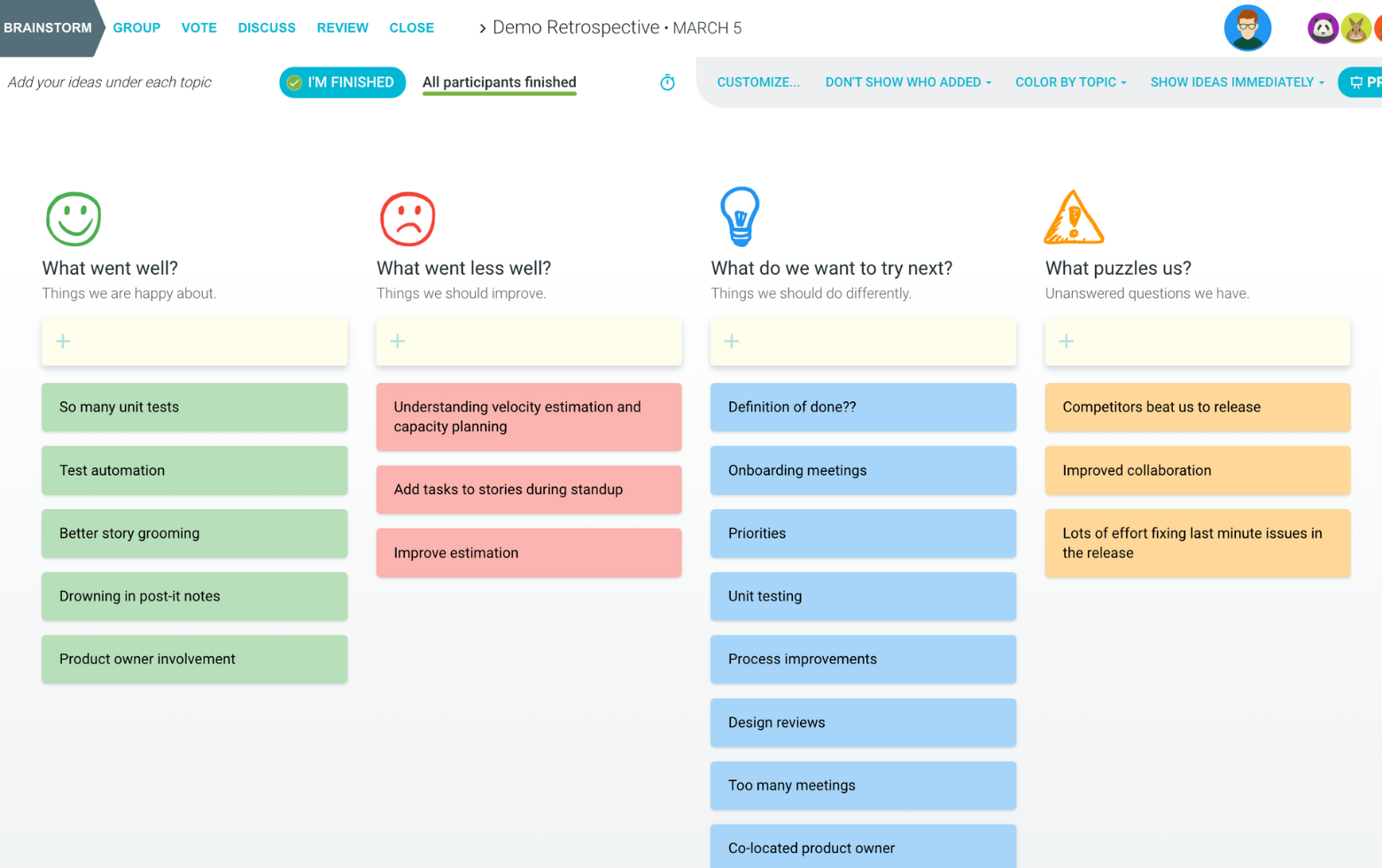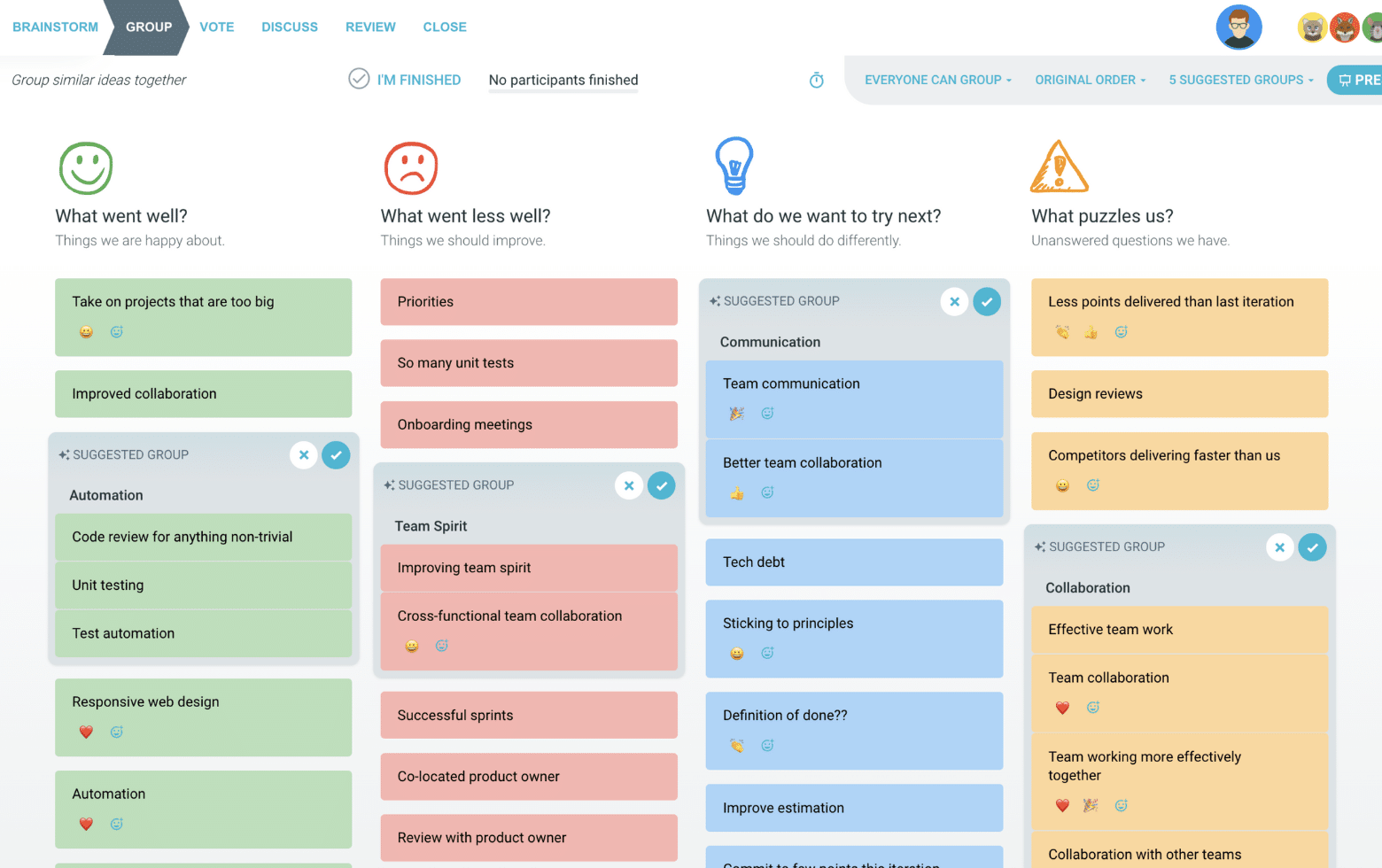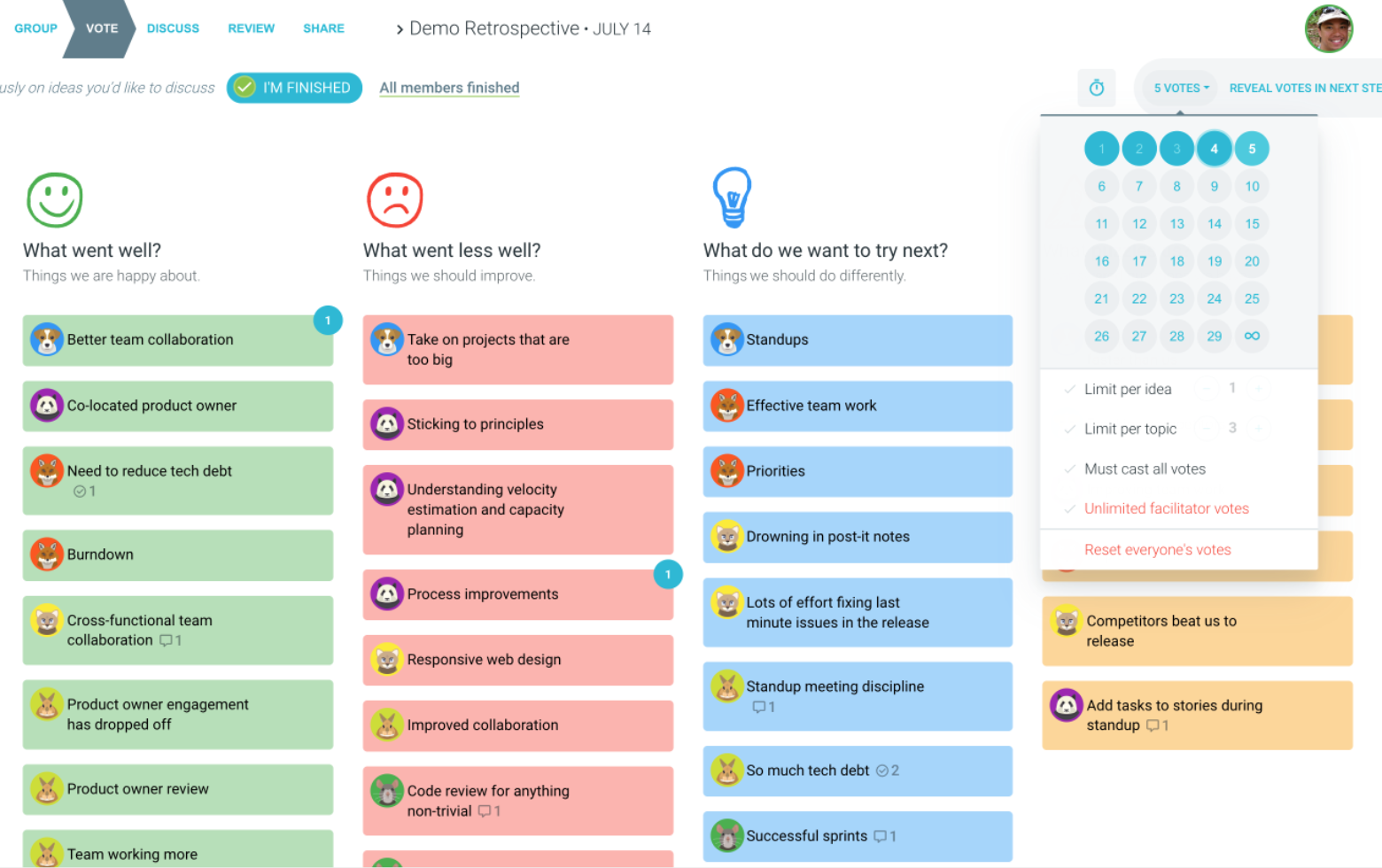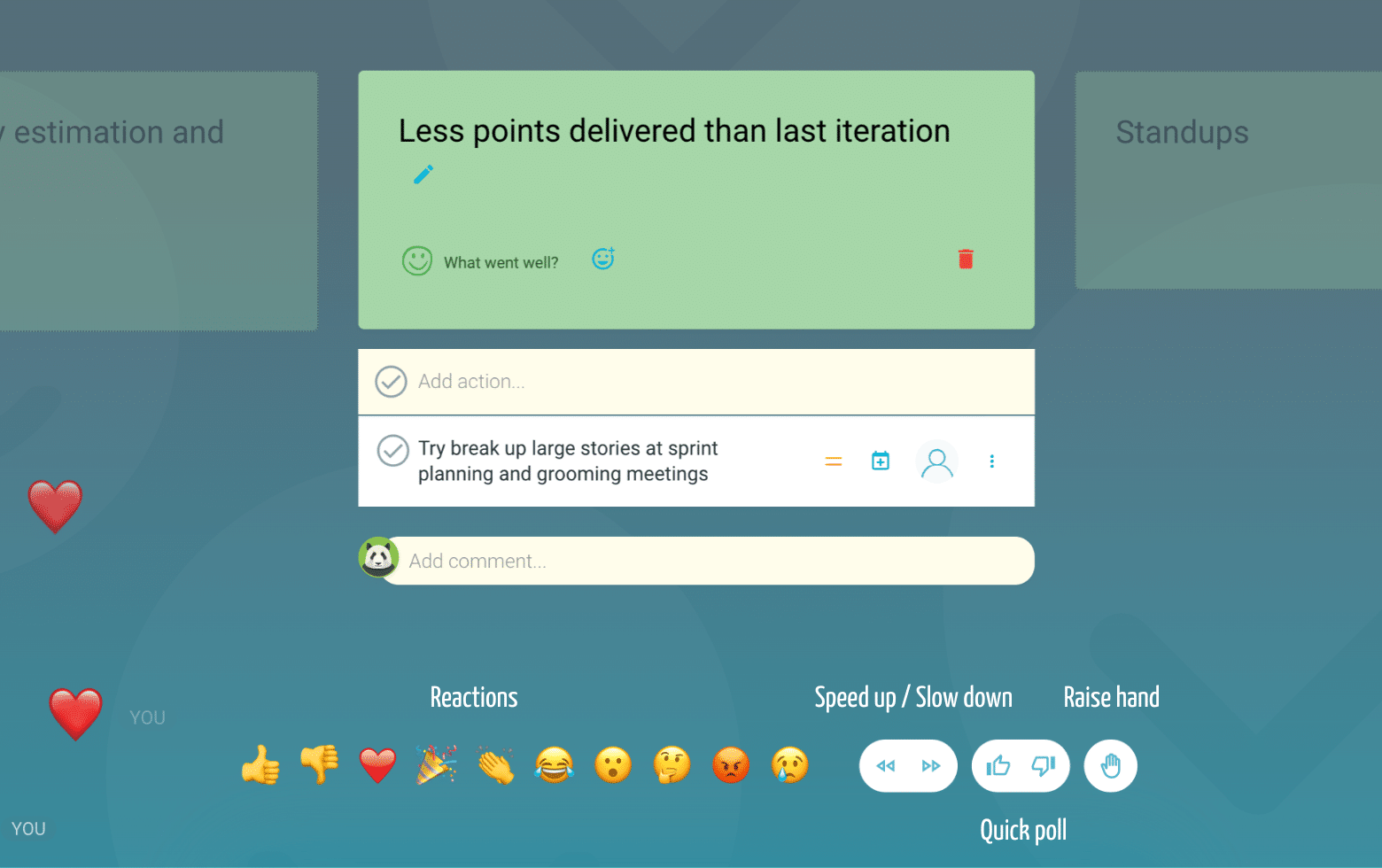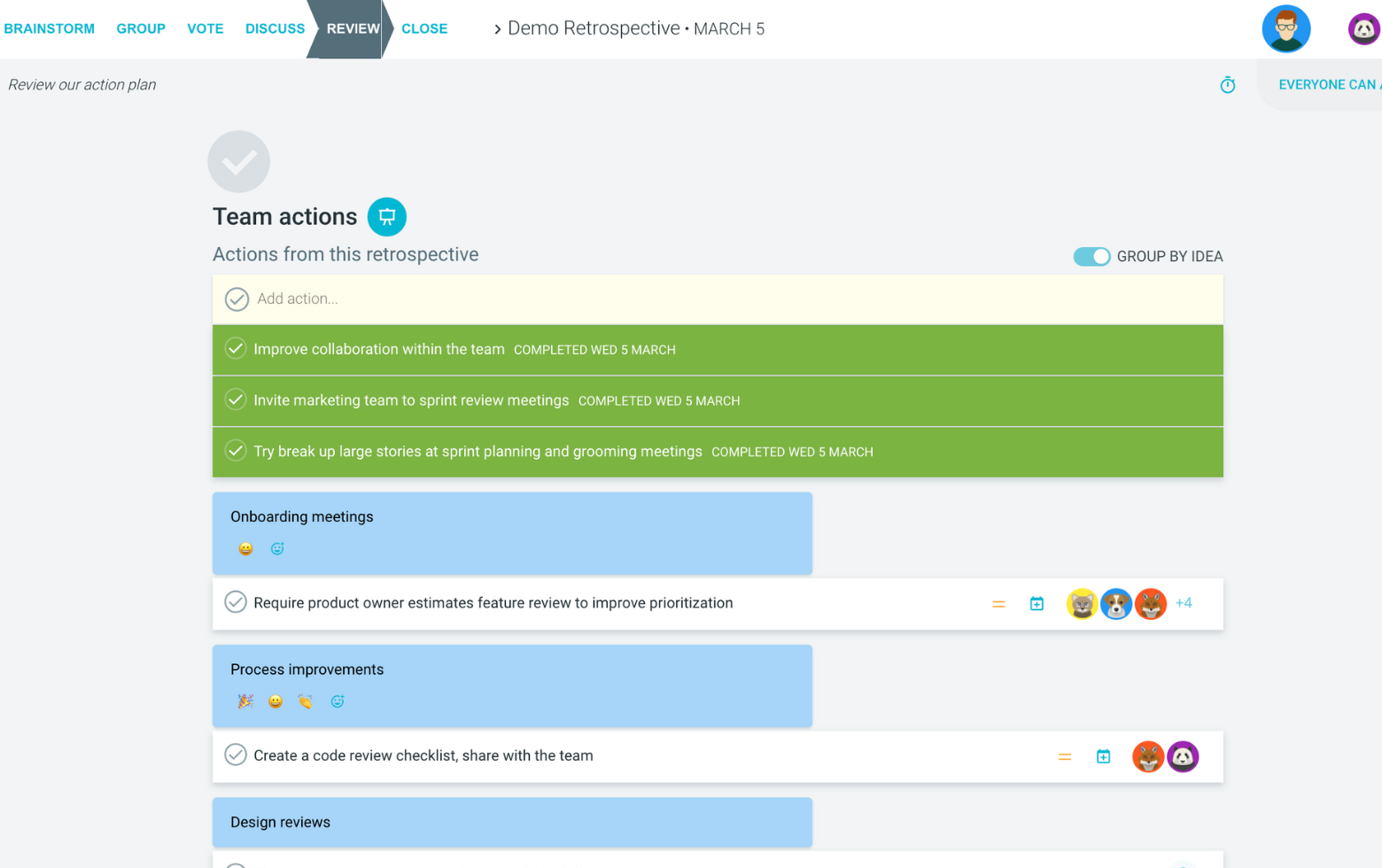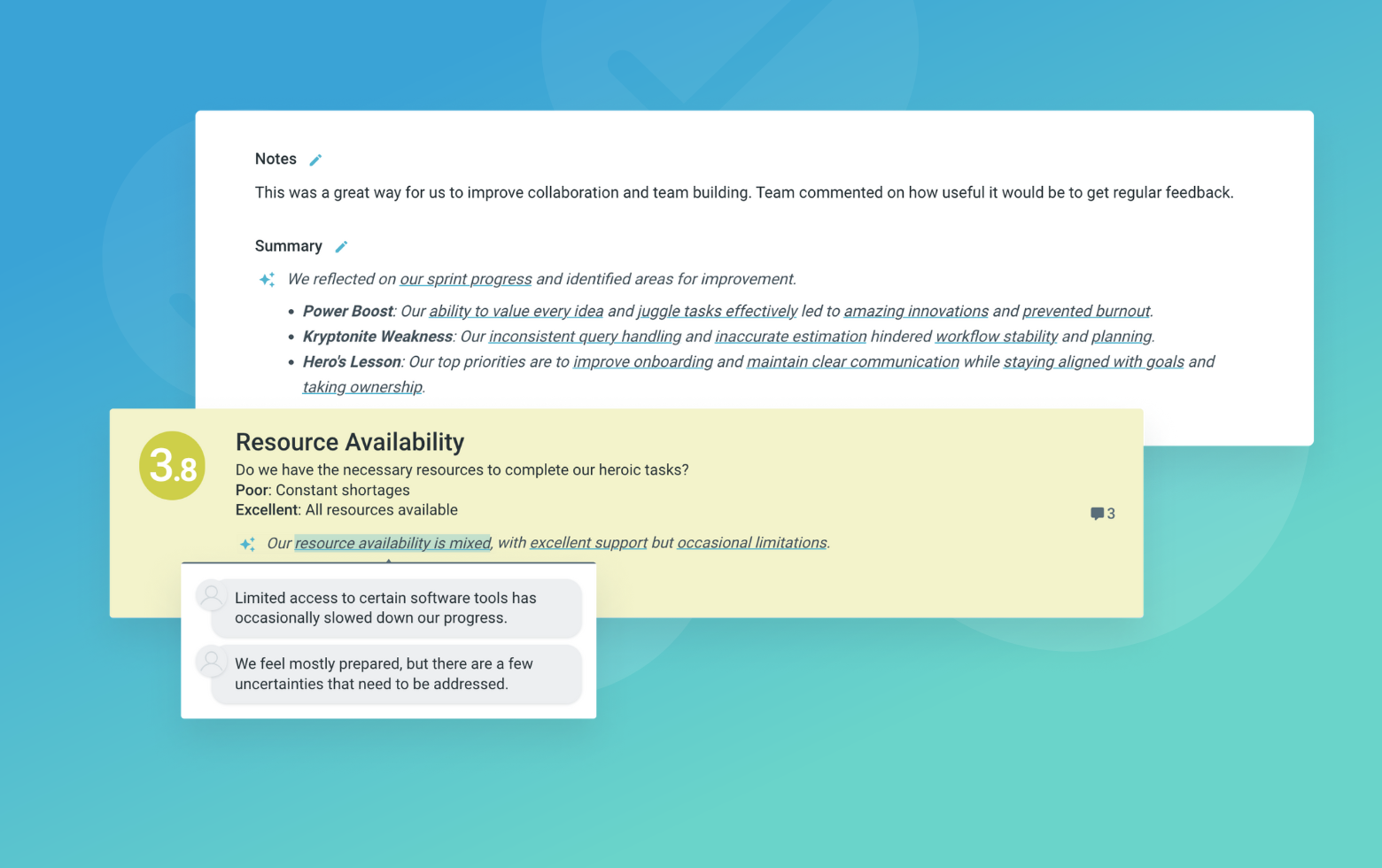A Lost Deals Retrospective is a focused meeting to review recent lost sales opportunities and identify areas for improvement. By analyzing what went well, what didn't, and why deals were lost, teams can uncover valuable insights to refine their sales process, messaging, and strategies.
This type of retrospective encourages open discussion in a blame-free environment. It helps teams learn from experiences, build on strengths, and address weaknesses. The goal is continuous improvement by turning losses into lessons.
What is The Lost Deals Retrospective
What went wrong?
What factors contributed to losing the deal?
Encourage an open discussion, but avoid blame or finger-pointing.
What went well?
What did we do right during the sales process?
Highlight positives to build confidence and reinforce good practices.
What can we learn?
What key lessons or insights did we gain?
Encourage introspection to identify areas for personal/team growth.
What should we do differently?
How can we apply these lessons to improve?
Develop concrete action items to implement changes.
Suggested icebreaker questions
- If you could be a door-to-door salesperson, what would be the worst or weirdest product to sell?
- What's the most memorable or cringeworthy sales call or pitch you've experienced?
Ideas and tips for your retrospective meeting
- Create a blame-free environment focused on learning, not finger-pointing.
- Involve all key stakeholders impacted by the lost deal for diverse perspectives.
- Document key findings and commit to specific action items for improvement.
- Follow up to ensure action items are implemented and having the desired impact.
- Consider bringing in an outside facilitator for an objective point of view.
- Build in time for open discussion beyond just the core topics.
.
How to run effective meetings with TeamRetro
Start Your Session in a Click
Log into TeamRetro and choose your template. Customise questions and the workflow to create your perfect retro for your team.
Create Your Team Easily – No Separate Accounts Needed
Brainstorm Individually – Free From Bias
Smart Grouping for Faster Insights
Fair, Flexible, and Fast Voting
Engage, React, and Capture Key Insights
Walk your team through ideas one by one with Presentation Mode. Stay in sync, spark real-time discussions, and capture feedback with comments, live reactions, and polls—all in one place.
Turn Ideas Into Action
Propose next steps with team buy-in, get AI-powered action suggestions, and keep everything in one place. Committed actions sync to your personal dashboard and integrate with your workflow tools—keeping you on track.
Save, Share, and Stay on Track
Get quick AI-powered summaries, add facilitator notes, and store retrospectives in your library for easy access. Schedule your next session and track published actions to keep your team accountable at the next retro.
Turn Team Data into Actionable Insights
Uncover trends, common themes, and key engagement metrics at a glance. Track sentiment shifts, analyze conversations, and monitor completed actions to drive continuous improvement.
